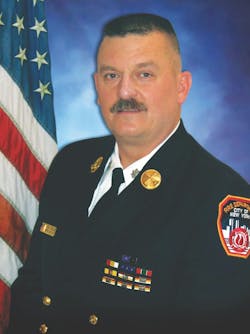The Fire Scene: Forget Safety, Embrace Firefighter Training

Key Takeaways
- When firefighters operate at an incident, they are in danger. They aren’t “safe.” Training allows them to be adequately prepared on scene, and that’s what helps them to return to the secure environs of the firehouse.
- Hands-on training and all of its complexities and preparation usually result in an experience that very closely resembles actual incidents.
- If training isn’t mandated, there’s an immediate increase in the chances that it won’t occur.
Before you fall off of your chair, let me explain the “forget safety” element of the title of this column. A dictionary definition of safety is “The state of being safe; freedom from the occurrence or risk of injury, danger or loss.” Well, most of the work that we do and most of the locations where we work aren’t free of risk of injury, danger or loss. So, it could be said that safety is the destination, or the result, of our working in dangerous atmospheres.
Safe is where we want to be when we return from operating at a working structural fire or an ice-covered highway accident. What we want to be while we operate at any incident is well trained and prepared adequately, but this doesn’t happen all by itself or simply by accumulating time on the job.
Three training tenets
The first and most important element of training is the simple act of conducting training events. Each of the various ways to conduct training has its advantages and limitations.
At a volunteer department, the training officer can assemble the members and present a drill on fires in private dwellings using a computer-generated program or videos. If the program uses images and film segments of local familiar operations, the attending firefighters might get an even better training experience. If the instructor follows up by posing questions to the firefighters about the program, more teaching points can be made.
Utilizing hands-on training is another great way to prepare firefighters for the dangerous work that they do. This is a much more difficult endeavor that requires more preparation, resources and time. Furthermore, there’s an increased opportunity for accidents and injuries. However, when hands-on training is conducted and prepared for professionally, the result often is a training experience that very closely resembles the actual event.
A third activity is to conduct on-scene reviews of emergency operations. Every vehicle fire, food-on-the-stove incident, carbon monoxide alarm activation, structural fire, motor vehicle accident, etc., presents training opportunities for the crews that are involved. Almost every fire department operation results in actions or omissions that can be quick-key identified and discussed either on scene or immediately on return to the firehouse. Company officers that use simple activities (e.g., chocking a vehicle that’s burning so that it doesn’t roll away or cause injury, securing a bedroom door at a fire so that it doesn’t close and lock while firefighters are inside, and applying a foam stream properly at a flammable liquid fire for rapid extinguishment) as training events easily can multiply the number of training events and lessons learned for their members.
Opportunity vs. requirement
Company officers often are asked exactly when and how often they conduct training with their crew. These are important questions, and the answers differ from department to department.
Disciplined company officers often conduct training every time or shift that they work.
In the case of volunteer companies, it could be weekly or at the company’s regularly scheduled drills. That said, is this a training requirement or a training opportunity?
If training isn’t mandated, there’s an immediate increase in chances that it won’t occur. Many departments, including FDNY, have an assigned training period every shift. This takes the issue out of the company officers’ hands and turns it into a requirement. Many departments provide training resources, such as training props, tactical libraries, video subscriptions and a list of daily topics, to assist company officers in getting this vital activity underway and effective.
Training leads to safety
Training is the most important activity that firefighters can be involved in. It also is the single most impactful activity that results in a safe destination for every firefighter after every response.
About the Author
John J. Salka Jr.
Battalion Chief
JOHN J. SALKA JR., who is a Firehouse contributing editor, retired as a battalion chief with FDNY, serving as commander of the 18th battalion in the Bronx. Salka has instructed at several FDNY training programs, including the department’s Probationary Firefighters School, Captains Management Program and Battalion Chiefs Command Course. He conducts training programs at national and local conferences and has been recognized for his firefighter survival course, “Get Out Alive.” Salka co-authored the FDNY Engine Company Operations manual and wrote the book "First In, Last Out–Leadership Lessons From the New York Fire Department." He also operates Fire Command Training, which is a New York-based fire service training and consulting firm.
